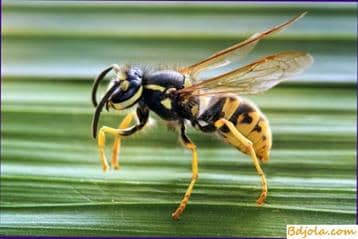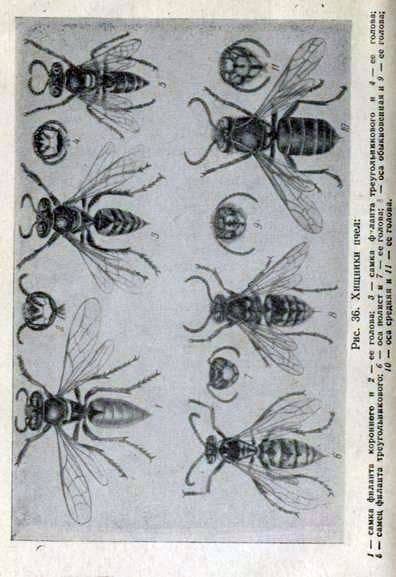
Wasps prbnikayut in a hive and kidnap honey, and sometimes bees for feeding larvae. There are many species. The most common on apiaries are common wasp (Vespa vulgaris), polist (Polistis gallica), forest wasp (Vespa silvestris), average wasp (Vespa media), red wasp (Vespa rufa).

Wasps live, like hornets, by families, which become numerous at the end of summer and in autumn. Therefore, their attacks on bees are frequent in August and September.
The main harm to bees wasps is caused by flights to the apiary early in the morning at a low temperature, when bees are inactive. Under such conditions, the wasps easily penetrate into the hives and steal honey.
The larvae of their wasps are fed with small insects, and sometimes bees. Bees catch more often those who sit on the ground. Catch also drones. Wasps are visited by masses in the markets, where honey and fruit are on sale.
Control measures. The struggle with wasps consists in the destruction of nests and the destruction of the female in the spring, flying to apiaries (see measures to combat hornets).
Мед синяковый. Домик для пасечника.
Predator bees